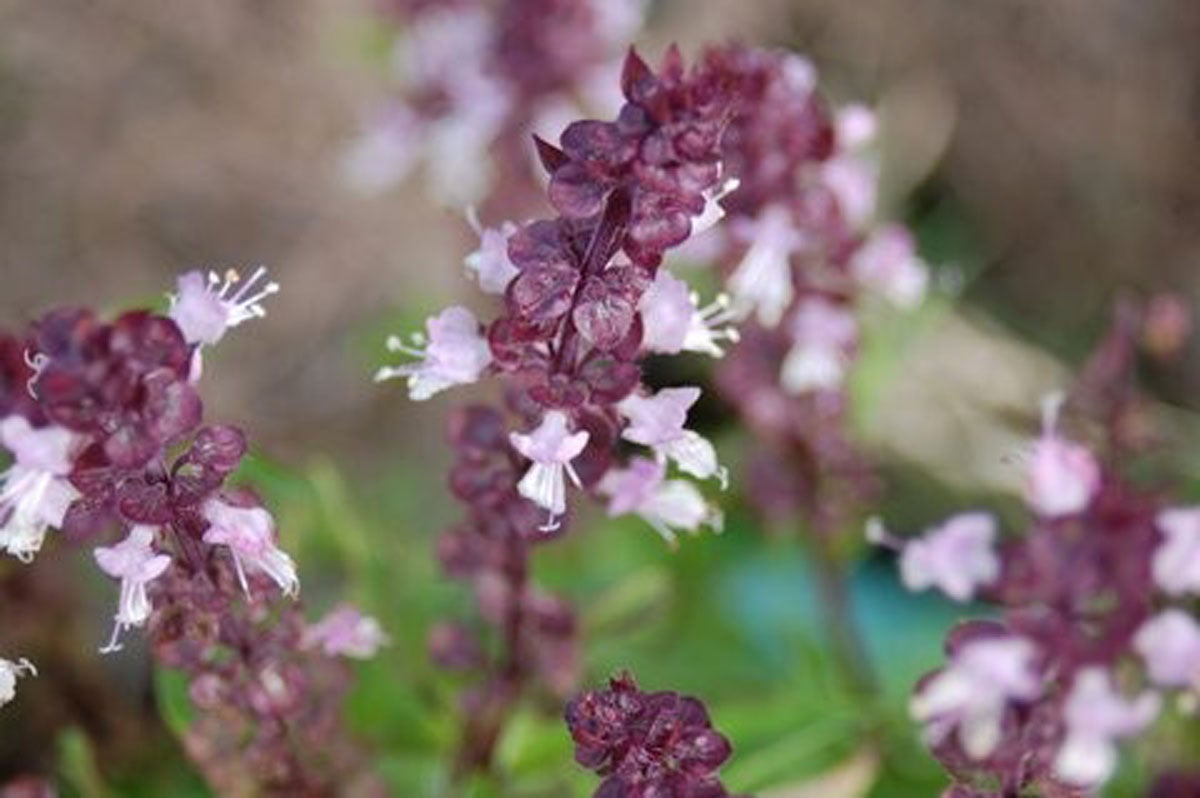Licorice Basil Info – How To Grow A Licorice Basil Plant


Basil is one of the most popular herbs gown by home gardeners. With great variety in size, texture, and taste among the various cultivars, it is easy to see why basil is such a popular choice. While most basil plants range in color from green to purple, taste differences between cultivars cannot be ignored.
Bold flavor profiles lend the plants’ use to imaginative and creative kitchen recipes, as well as in traditional favorites throughout the world. For this reason, basils such as the licorice basil plant are long-time favorites among traditional gardeners and herb aficionados alike.
What is Licorice Basil?
Licorice basil is a strong, flavorful variety of basil which grows into vibrant green plants with hints of purple on the foliage. A type of Thai basil, these plants are not only beautiful, but reward growers as an immensely fragrant addition to the home garden. As the name would imply, both licorice and anise are prevalent in the flavor of the basil. Licorice, growing in the ground or in containers, thrives in warm weather climates which receive ample sunlight.
Licorice Basil Info
Like many other varieties of basil, licorice flavored basil plants are extremely easy to grow. While it may be possible to locate seedlings in local garden centers, most believe that basil is best grown from seed. Basil licorice growing from seed is a cost effective way to increase basil harvests, even for those with relatively short growing seasons.
Growers have several options when starting basil seed. Though it is possible to start basil seeds indoors in seed trays, many gardeners find that direct sowing the seed is both efficient and effective. To direct sow, simply broadcast the seeds into a well amended and weed free garden bed and water thoroughly.
Seedlings should emerge within 7-10 days of planting. Since these plants are frost tender, make certain only to sow into the garden after all chance of frost has passed in your growing zone.
Beyond planting, licorice basil plants require little care. To promote healthier, bushier plants, many gardeners may choose to pinch basil seedlings early in the season as a means to help promote the plants’ branching habit.
Gardening tips, videos, info and more delivered right to your inbox!
Sign up for the Gardening Know How newsletter today and receive a free copy of our e-book "How to Grow Delicious Tomatoes".
Frequent and consistent watering will result in lush, green growth from plants without the need for frequent fertilization. At harvest time, make certain only to remove about one-fourth of the plant to ensure continued basil harvests throughout the season.

Tonya Barnett has been gardening for 13 years. Flowers are her passion. She has transformed her backyard into a cut flower garden, which she regularly chronicles on her YouTube channel http://www.youtube.com/@tonyawiththeflowers.
-
 Looking For Plants To Give You The Soft And Fuzzies? Try These 5 Fuzzy Leaf Plant Options
Looking For Plants To Give You The Soft And Fuzzies? Try These 5 Fuzzy Leaf Plant OptionsLovers of texture, drama, silver foliage and tactile plants will adore these special sensory garden additions. These fuzzy leaf plant options will leave you all aglow
By Susan Albert
-
 Get Ready For A Summer Of Hummers! Grow These Full Sun Hummingbird Plants and Flowers
Get Ready For A Summer Of Hummers! Grow These Full Sun Hummingbird Plants and FlowersIf you’re lucky enough to enjoy a sunny backyard, make sure you are maxing out on your pollinator opportunities and grow these full sun hummingbird plants and flowers
By Tonya Barnett